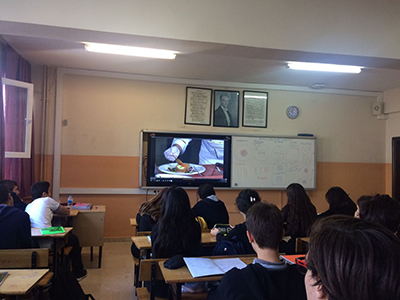- Details
On August 16, 2015, while on a state visit to the United Arab Emirates, India’s Prime Minister Narendra Modi met with Sudhakar Tomar, the managing director of Dubai-based Hakan Agro DMCC, one of the largest agricultural and food commodities origination and supply chain companies in the Arabian Peninsula.
- Details
A two day seminar on “Pulses-2016: Innovative Approaches for Sustainability in Production and Promotion of Utilization” took place October 21st and 22nd in Koti, Hyberabad. This event was organized by Research & Innovative Programmes Cell, University College for Women, Koti, Hyderabad 500095. Read the event program here.
- Details
 The project called “Living and Eating Healthy by Consuming Pulses”, organised by PAKDER, shows documentaries at schools to teach kids how to eat more pulses.
The project called “Living and Eating Healthy by Consuming Pulses”, organised by PAKDER, shows documentaries at schools to teach kids how to eat more pulses.
Photos can be found at the website www.bakliyatye.com
- Details
The International Year of Pulses is reminding the world that pulse crops play an important role in the sustainability of global agriculture and food systems, and that their potential is not currently being fully realized. Pulse crops use less fertilizer than other crops, they break up disease cycles in crop rotations, they provide tasty and nutritious foods, and they can deliver very good financial returns to producers.
- Details
Dr. Vincent Vadez, Principal Scientist, CGIAR-ICRISAT
From the past to the present, pulses benefit agricultural systems
Pulse crops have always been playing a beneficial and central role in crop rotations. Even the Romans and ancient Chinese already knew the benefit of using peas and soybean. When pulses are used as a ‘break crop’ for pests or diseases, wheat yield has been shown to increase by up to 1.2 tons per hectare [1] and the benefit even lasts for an additional wheat crop.